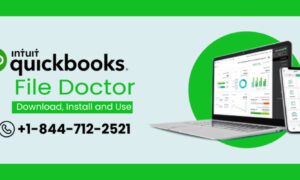The QuickBooks Clean Install Tool can be used to completely reinstall QuickBooks Desktop, which is one of the time-saving fixes for many QB Desktop problems. Performing a clean installation of the QuickBooks programme could resolve a number of problems. Therefore, you must adhere to the Clean Installation method in its entirety. The QuickBooks Desktop for Windows must first be uninstalled, the installation folders must be renamed, and then the QuickBooks Desktop must be reinstalled using the QB clean install programme. Don’t worry; although it may seem complicated to you, the process is actually quite straightforward.
Why is a Clean Install Tool Required for QuickBooks?
Uninstalling and reinstalling the QuickBooks desktop application undoubtedly requires using the QuickBooks Clean Install tool.This tool is used to resolve many errors like QB error 1328, Quickbooks error 15215 and so on.We’ve listed a few situations where using the QuickBooks Clean Install Tool Exe becomes essential below.
- If you have a problem when attempting to open several company files.
- When QuickBooks first shows installation issues.
- In an attempt to resolve common problem codes, you reinstalled QuickBooks, but it did not resolve the problem.
Precautions for Using the Clean Install Tool
To prevent any file or data loss, there are a few precautionary procedures you must do before you start to clean and install QuickBooks Desktop. We’ve discussed every one of these criteria below:
- Verify that you have the most recent version of the QuickBooks desktop application downloaded.
- Write down the year and version of your product.
- To prevent any data loss, be careful to make a backup of your company file.
- You’ll be prompted to enter the License and Product Number right after uninstalling and reinstalling the QuickBooks desktop application. You must therefore keep it close by. Either the original box or the email confirming your purchase contain it.
How Do I Use The QB Desktop Clean Install Tool For QuickBooks?
Using the QuickBooks Clean Install programme, a clean installation of QB Desktop can fix many software and company file damage problems. There are three primary steps to performing a clean install with the QB clean install utility: –
- Remove the QuickBooks Desktop programme.
- the installation directories, rename
- QuickBooks once more on your desktop
Step 1: Remove the desktop version of QuickBooks
You must uninstall or remove the pre-existing QuickBooks version from your Windows PC before beginning the clean install process for the application. To uninstall QBD without losing any data, adhere to the instructions listed below.
- Search for and open the Control Panel on your computer.
- Choose Programs and Features or Uninstall a Program from that point on.
- Select the QuickBooks Desktop version that is giving you problems from the list of apps.
- By selecting the Change/Uninstall option at the top of the list, you can now uninstall the QB desktop.
Step 2: Launch the Clean Installation Tool
The Clean Install Tool names the old install directories on its own. When you reinstall the QuickBooks application, this feature enables QuickBooks to upload fresh install files as necessary.
- Select Installation Issues in the QuickBooks Tools Hub.
- Click OK after selecting Clean Install Tool.
- You must also choose your QuickBooks version and the product version before pressing the Continue button.
- Please install your copy of QuickBooks to the default location when the message “Please click OK” appears on your screen.
Step 3: Completely remove QuickBooks Desktop by manually renaming the QuickBooks Installation folder.
As previously said, if you’re running QuickBooks 2020 or an earlier version, you must manually rename the folders. To rename the installation directories, follow the instructions below:
- You must first do the procedures given below to make the hidden files visible.
- OS Windows 10: To launch File Explorer on your Desktop or System Tray, click the folder icon. Under the View tab, select Hidden Items.
- Window 8 and 8.1: Press Windows + E at the same time to launch File Explorer. Select File extensions and Hidden objects under the View tab.
- Open File Explorer by clicking the Windows icon.
- You have saved your QuickBooks company files in a folder called QuickBooks, so search for it and access it. Here are some places where you can find it:
- C:Program FilesIntuit
- QuickBooks 64-bit version (year) QuickBooks is located at C:Program Files (x86)Intuit.
- To rename the folder, choose it using the right mouse click. After the folder name, include the term old. It will prevent QB from opening while it is being reinstalled.
- Reinstall the QuickBooks Desktop application once you’re finished.
- Select Task Manager by performing a right-click on the Windows Task Bar.
- Then, pick the Name column heading on the Processes tab to sort the list.
- Additionally, choose each of the following processes, then click End Process: Qbw32.exe, QBDBMgrN.exe, QBDBMgr.exe, and QBCFMonitorService.exe.
- When the warning “WARNING: Terminating a process can create undesirable outcomes” shows on the screen, click Yes.
- You may finally reinstall QuickBooks Desktop.
Step 4: Reinstall QB Desktop
You can download QuickBooks Desktop and reinstall it by following the instructions below if you’re renaming the QB desktop installation folders:
- To finish the installation procedure if you have a CD, put it in the computer and follow the on-screen directions.
- Download your version of QuickBooks from the QuickBooks Product Download Page if you purchased it from the Intuit website.
- Run the setup when you’ve downloaded it. You will now be prompted to input the licence and product numbers that you can find on the CD packaging or the email confirming your online order.
Using a wizard, you can finish the remaining steps:
- Accept the licencing agreements’ terms by clicking Next. Once more, press Next.
- When prompted, provide your licence information and product number before selecting Next.
- Choose the Installation type that best suits your accounting procedure. Try to stick with the Recommended option, though.
- Next, select Install, and then click Next. Your computer will start the installation of QuickBooks.
- After installation is complete, select QuickBooks to open.
Conclusion:
In this article, we will cover all the information about Quickbooks clean install tool. We hope you will easily understand about this topic and you can follow this steps to use this tool.



































